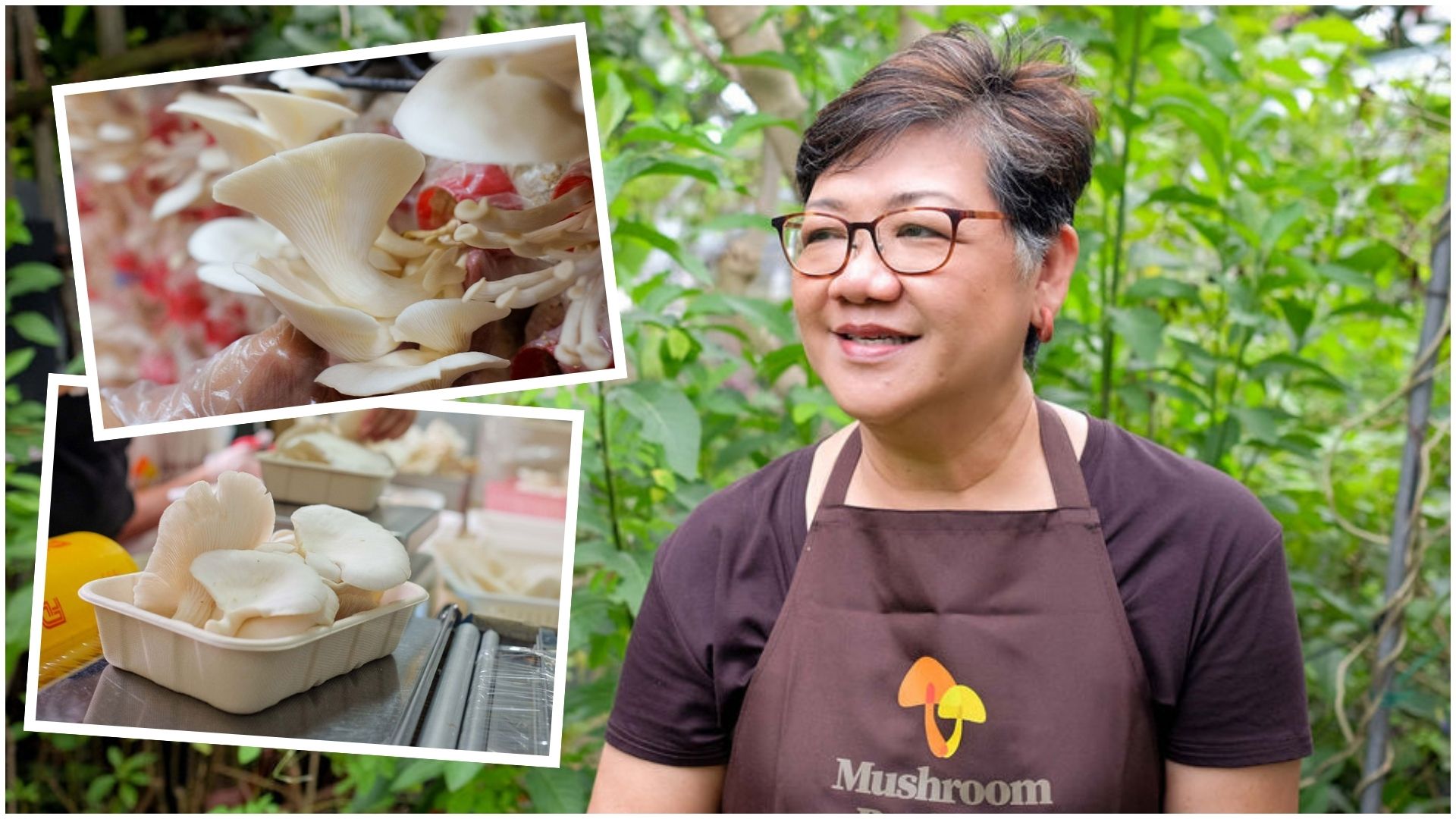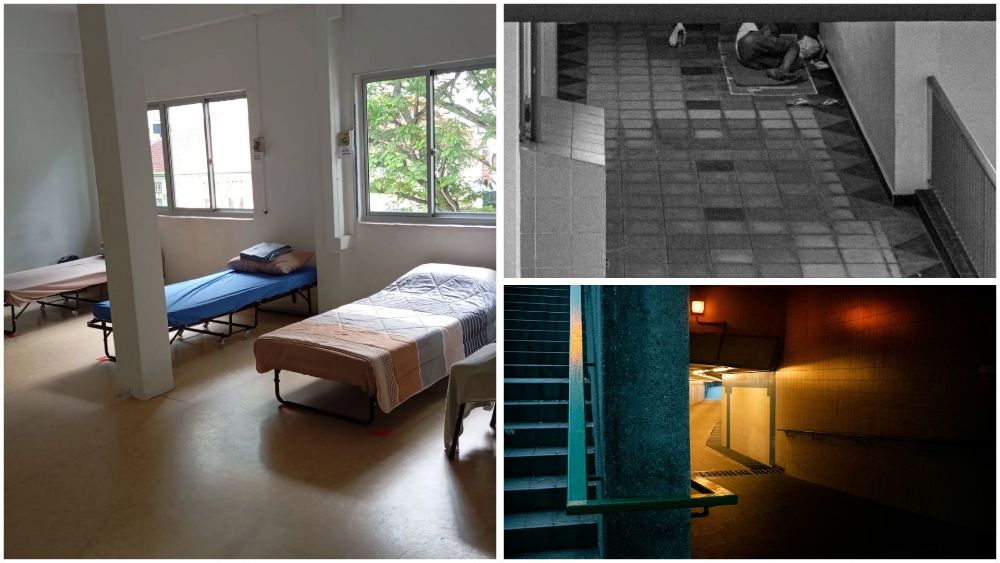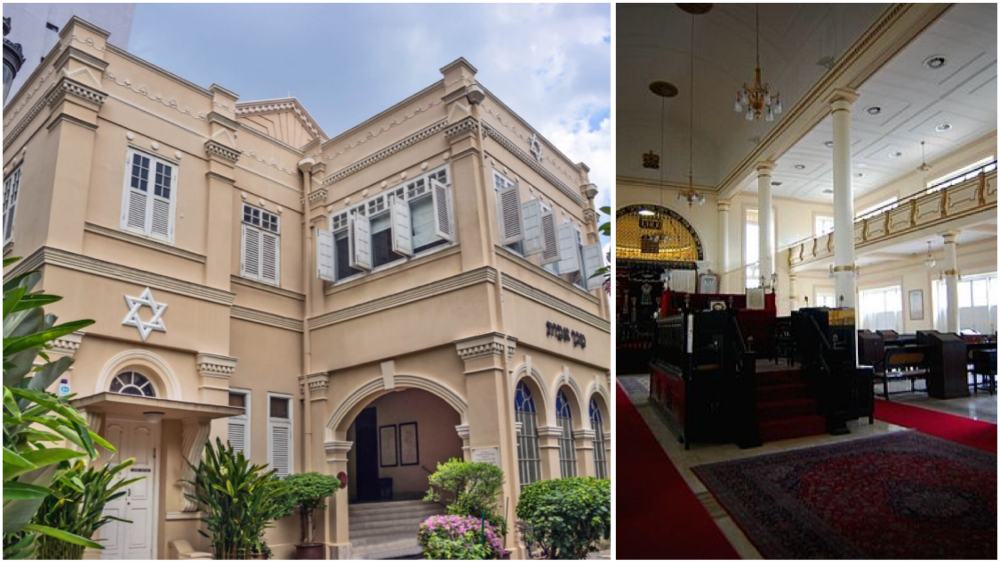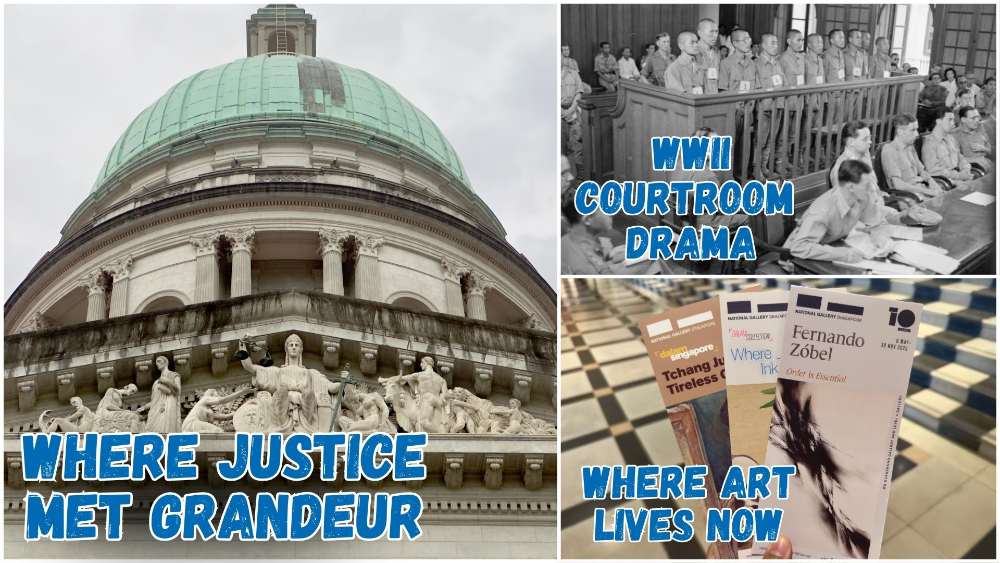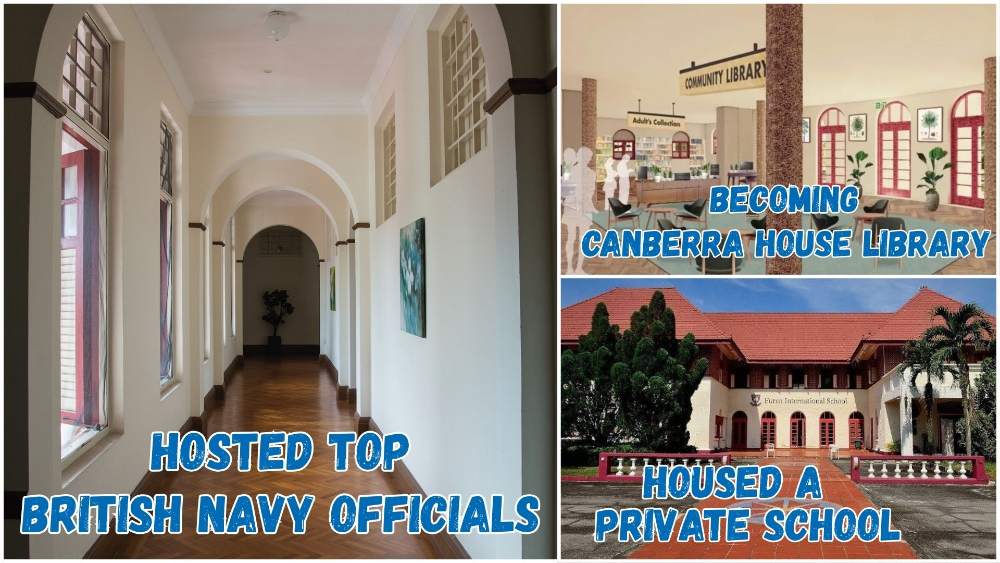Wow! This National Monument On Waterloo Street Is Southeast Asia's Oldest Synagogue
What is a National Monument? Who gazettes them? How many national monuments are there in Singapore? To date, the Preservation of Sites and Monuments, a division of National Heritage Board, has identified and gazetted 75 buildings, structures and sites of national significance as an integral part of Singapore’s built heritage.
And we're here to tell you all about them - one National Monument at a time!
You've probably passed by or stepped into more than a few of them without realising they were National Monuments: Al-Abrar Mosque, Asian Civilisations Museum, the Civilian War Memorial, Saint Andrew's Cathedral, the Esplanade Park Memorials, Fort Siloso on Sentosa - no need to plan an itinerary for friends visiting from overseas; just show them this article ✌️
In this edition, we take a closer look at the oldest surviving synagogue on our Little Red Dot, the Maghain Aboth Synagogue.
📍 Location
The Maghain Aboth Synagogue was the 35th building to be gazetted as a National Monument. Located near other National Monuments such as the Church of Saints Peter and Paul, and the Former Saint Joseph's Institution (today's Singapore Art Museum), the MRT stations nearest to Maghain Aboth Synagogue are Bencoolen and Bras Basah.
📅 Significant dates
Dates built:
- Sept 1841-1871: The first synagogue, in the form of a two-storey shophouse, was built on Synagogue Street
- 1873-1878: Maghain Aboth Synagogue was constructed on Church Street (today's Waterloo Street)
Milestones:
- 4 Apr 1878: Maghain Aboth Synagogue was consecrated
- 2007: The Jacob Ballas Centre was added to the compound
- 2 Dec 2021: The Jews of Singapore Museum opened at the Jacob Ballas Centre
Date gazetted: 27 Feb 1998
📜 History
Fun fact: The word “synagogue” is derived from the Greek word "synagein" which means “to bring together”.
The synagogue plays a vital role in Jewish culture and daily life. Beyond being a place of worship, it serves as a communal hub for social and cultural gatherings. In early colonial Singapore, many Jewish immigrants settled around Boat Quay, near Commercial Square – what we now know as Raffles Place. The first synagogue in Singapore took the form of a simple shophouse along Synagogue Street, located within the Jewish quarter.
By the 1870s, a growing number of Jewish merchants and families had begun relocating from the city’s commercial centre to more residential areas such as Dhoby Ghaut and Bras Basah. As the Jewish community expanded, it became clear that a larger and more centrally located synagogue was needed to meet their religious and communal needs.
Three trustees were appointed to oversee the development of this new synagogue: Abraham Solomon, one of Singapore’s earliest Jewish settlers and a well-established trader; Joshua Raphael Joshua, who had found success in the opium trade; and his nephew, Manasseh Meyer, a prosperous businessman and respected philanthropist.
After an initial attempt to build the new synagogue failed, Meyer personally approached Attorney-General Thomas Braddell in 1873, seeking permission to sell the existing premises and purchase a new plot of land. Approval was granted, and a site along Waterloo Street was selected – just across from the Church of Saints Peter and Paul, and Saint Joseph’s Institution.
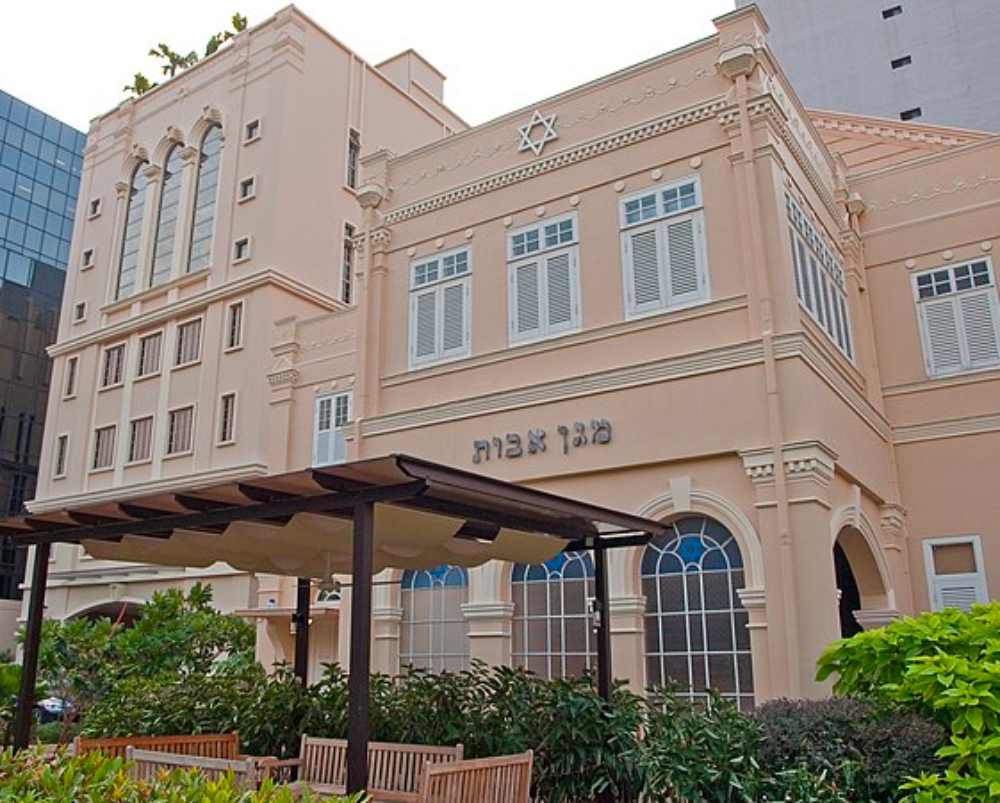 IMAGE: WIKIMEDIA COMMONS/@GAURAV.
IMAGE: WIKIMEDIA COMMONS/@GAURAV.
Construction got underway soon after, and five years later, the Maghain Aboth Synagogue, meaning “Shield of our Fathers” in Hebrew, was officially consecrated on 4 Apr 1878. The new synagogue also included a mikvah, a bath used for ritual purification.
As is customary in Judaism, men and women worship separately. Initially, the single-storey synagogue could only accommodate male worshippers. To enable female participation, Meyer funded the construction of a modest wooden gallery. This was later replaced in 1925 with a more permanent structure, which is still in use today.
Maghain Aboth quickly became a focal point for the Jewish community, hosting weekly Sabbath services and celebrating major religious festivals. Important rites of passage such as Bar and Bat Mitzvahs, weddings, and funerals are also held at the synagogue.
In 1978, the synagogue marked its 100th anniversary. David S. Marshall, Singapore’s first Chief Minister and a well-known figure in the Jewish community, attended the occasion as guest-of-honour.
To further support the needs of the local Jewish population, the Jacob Ballas Centre was opened next door in 2007. Named after the prominent Jewish philanthropist and stockbroker, the centre includes amenities such as a kosher butchery, a provisions store, and a hall for communal events.
Today, the Maghain Aboth Synagogue remains the primary place of worship for Singapore’s Jewish community and is overseen by the Jewish Welfare Board. It continues to host daily prayers, Sabbath services, and festival celebrations.
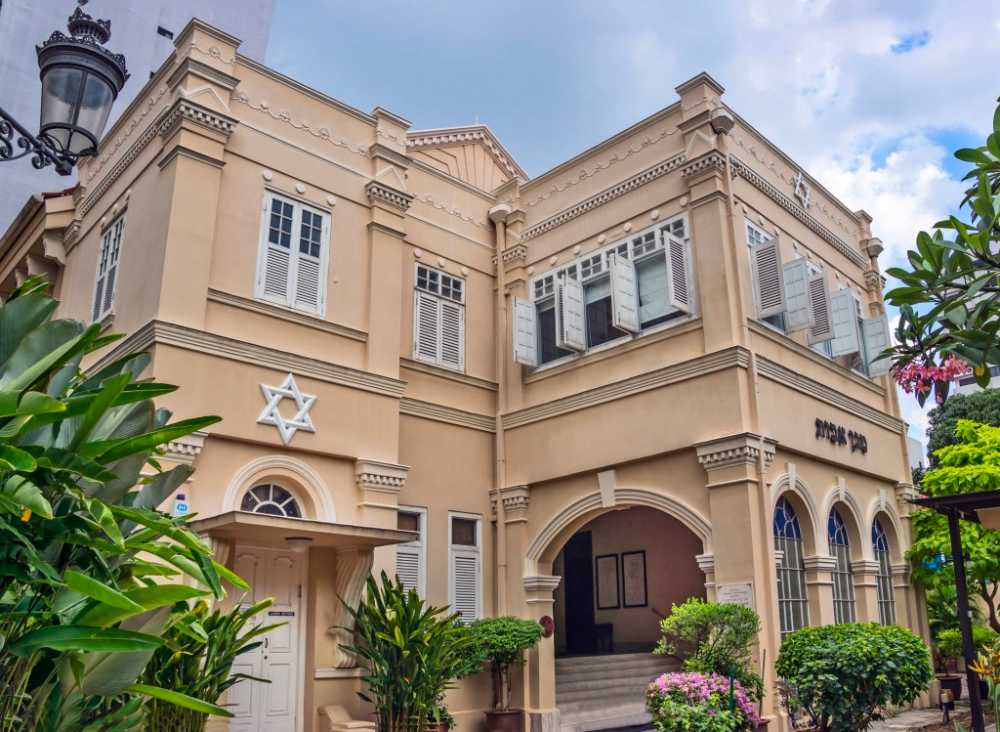 IMAGE: FACEBOOK/@THE JEWISH WELFARE BOARD SINGAPORE
IMAGE: FACEBOOK/@THE JEWISH WELFARE BOARD SINGAPORE
📐 Design and architecture
Architecturally, the synagogue incorporates Neoclassical elements such as Roman columns, pilasters, and rounded arches. The cornices are decorated with dentils—small, rectangular features resembling teeth. A Star of David, the universally recognised symbol of Judaism, is prominently displayed on the building’s front.
Though the synagogue was initially a single-storey structure, a U-shaped balcony was added in 1893 to provide a designated worship space for women, who enter via separate staircases.
Inside, the prayer hall features high ceilings, unadorned columns, and plain, textured walls, reflecting the Jewish prohibition against religious icons or images. At its centre lies the bimah, a raised platform where the rabbi leads prayers and reads from the Torah (“scrolls of the law”) during services.
The hall is oriented westward towards Jerusalem. The bimah faces the ahel, or ark, situated in a niche along the west wall. This sacred alcove holds the Torah scrolls and is usually veiled by an ornate curtain known as the parochet, a fringed curtain with detailed embroidery. Hanging before it is the eternal lamp, symbolising the everlasting flame once lit in the Temple of Jerusalem.
Before the installation of air-conditioning, the tall ceilings and large windows allowed for effective ventilation, while seats with woven cane backs kept congregants cool and comfortable in the tropical climate.
🕖 Opening hours
The synagogue is open from 9am to 5pm on the weekdays.
Regular visiting hours for the museum are 10am to 6pm daily, 10am to 12pm on Friday; it is closed on Saturdays and Jewish Festivals.
🎟️ Admission
Visits to both the synagogue and museum are by appointment only. Find out more here and here, respectively.
For the latest updates on Wonderwall.sg, be sure to follow us on TikTok, Telegram, Instagram, and Facebook. If you have a story idea for us, email us at
